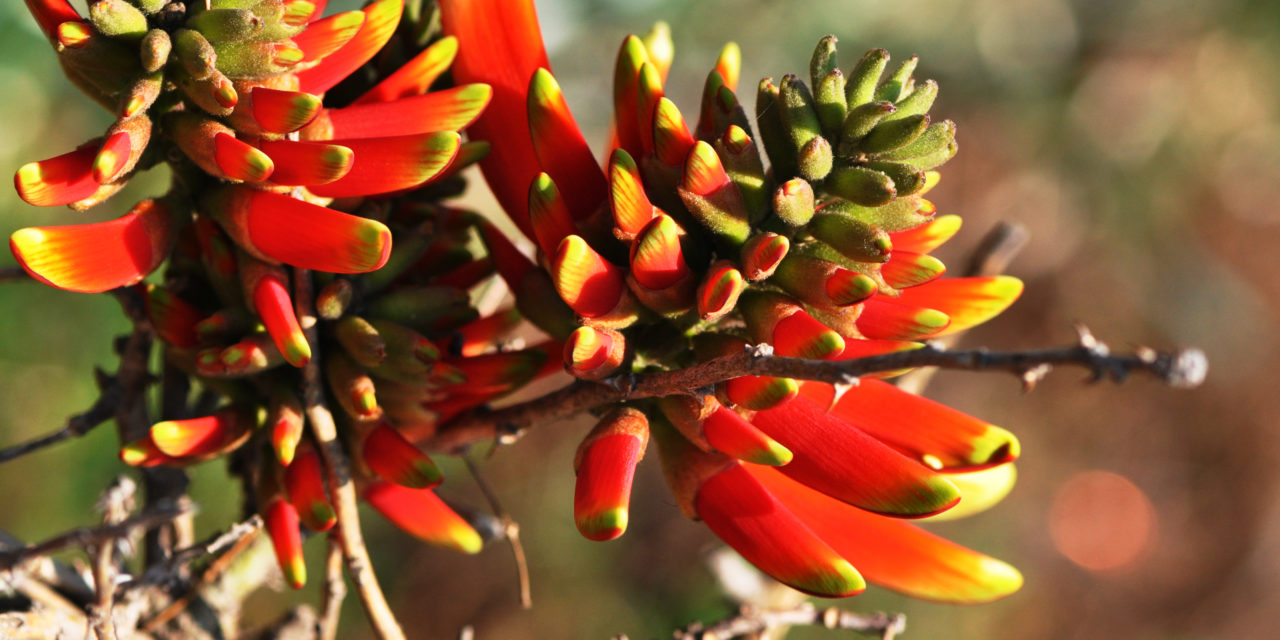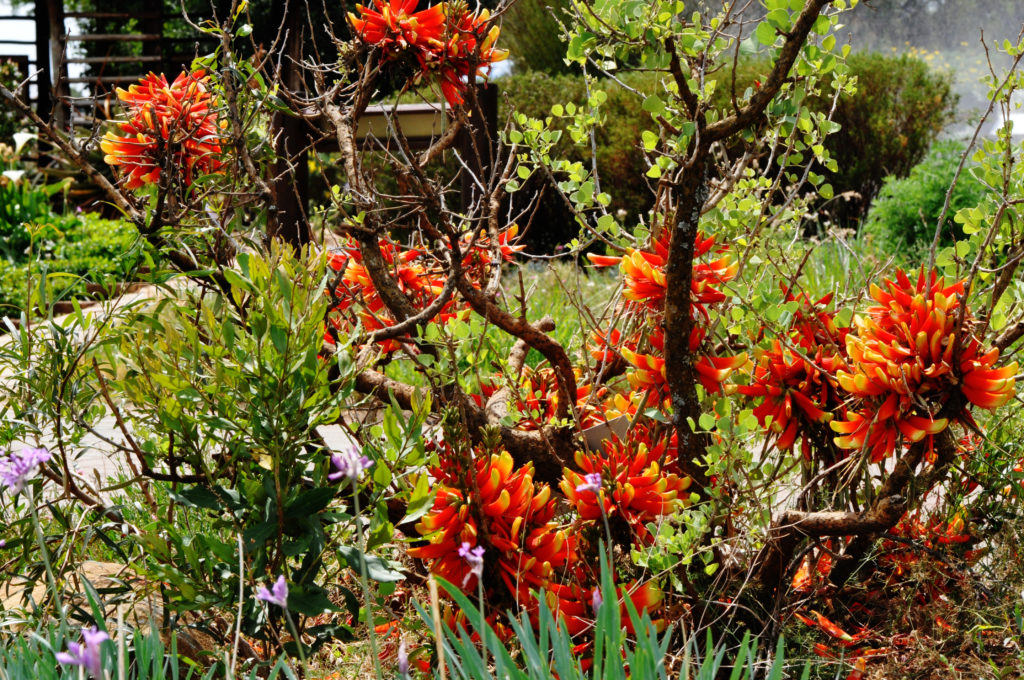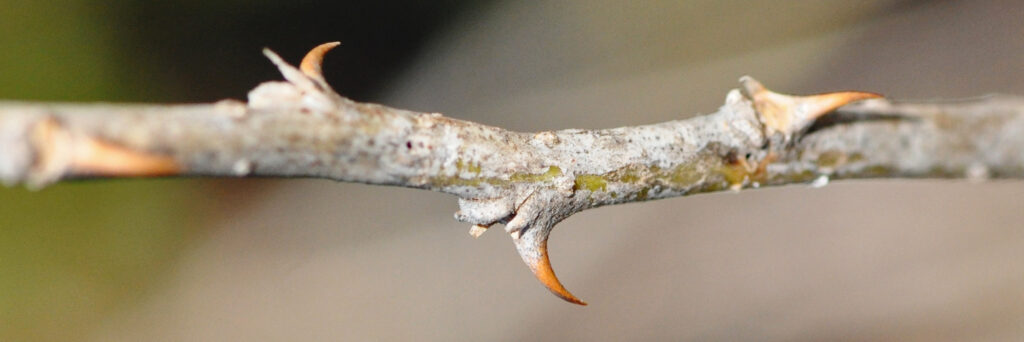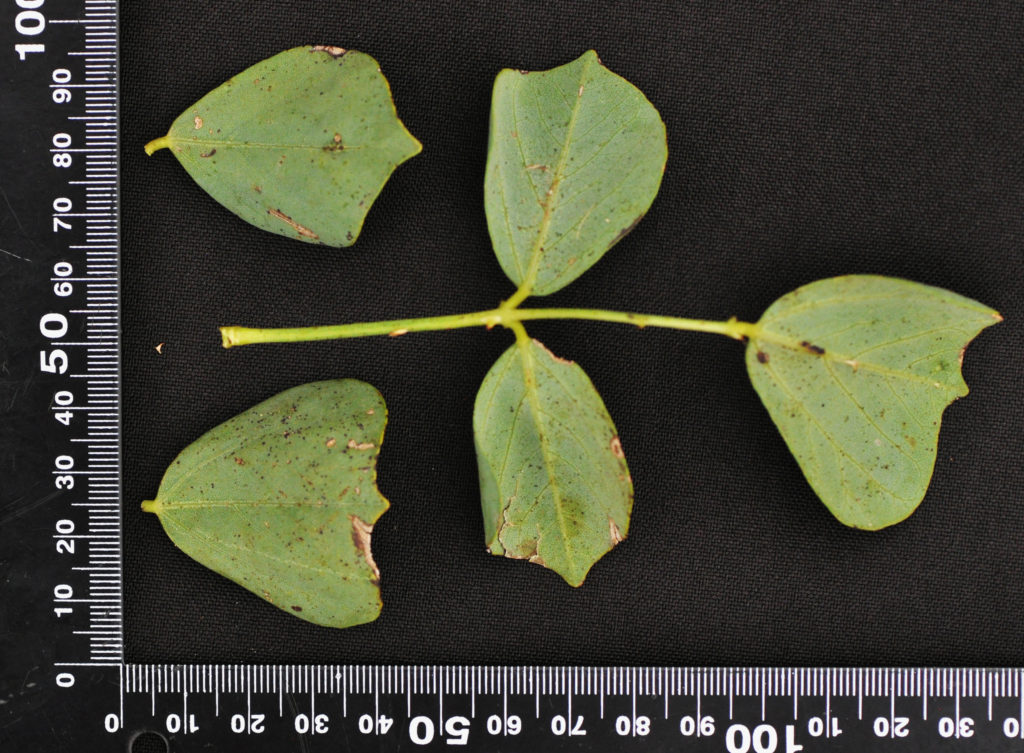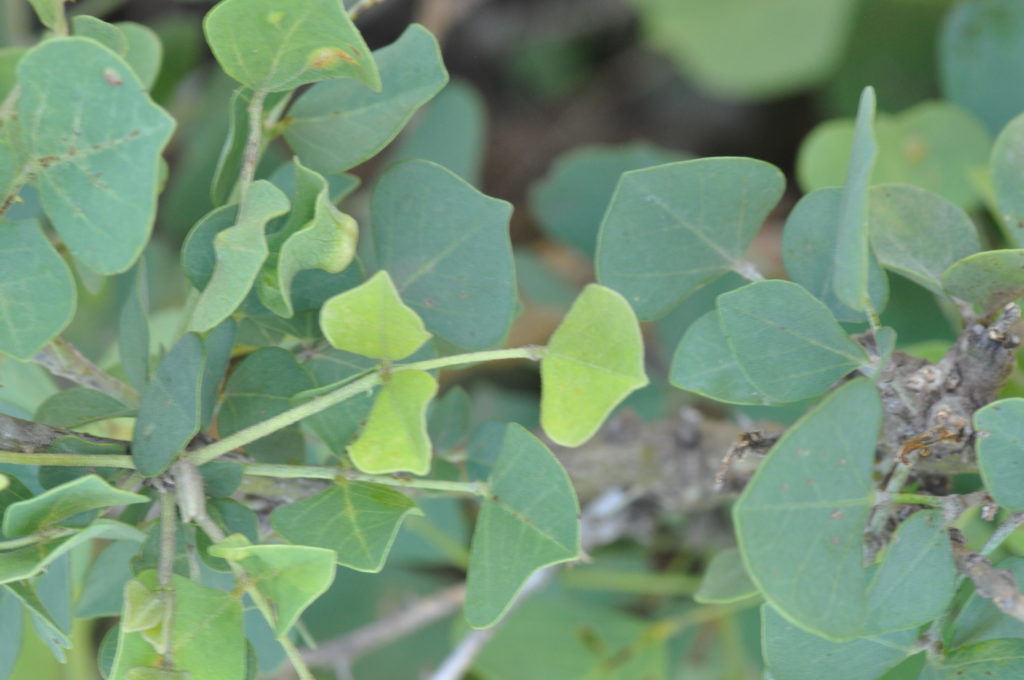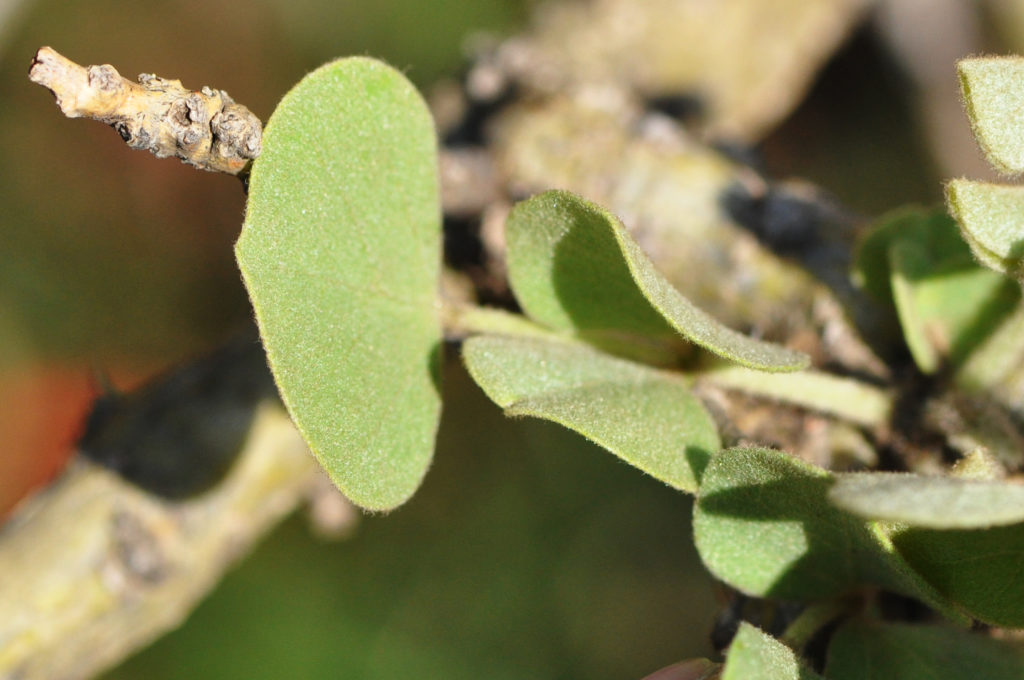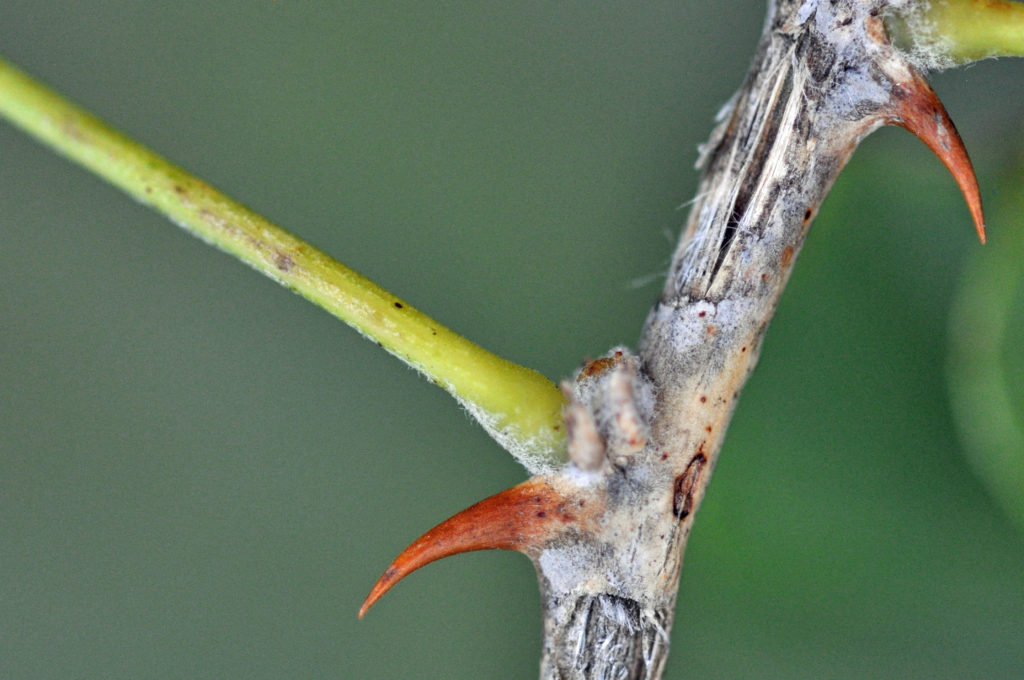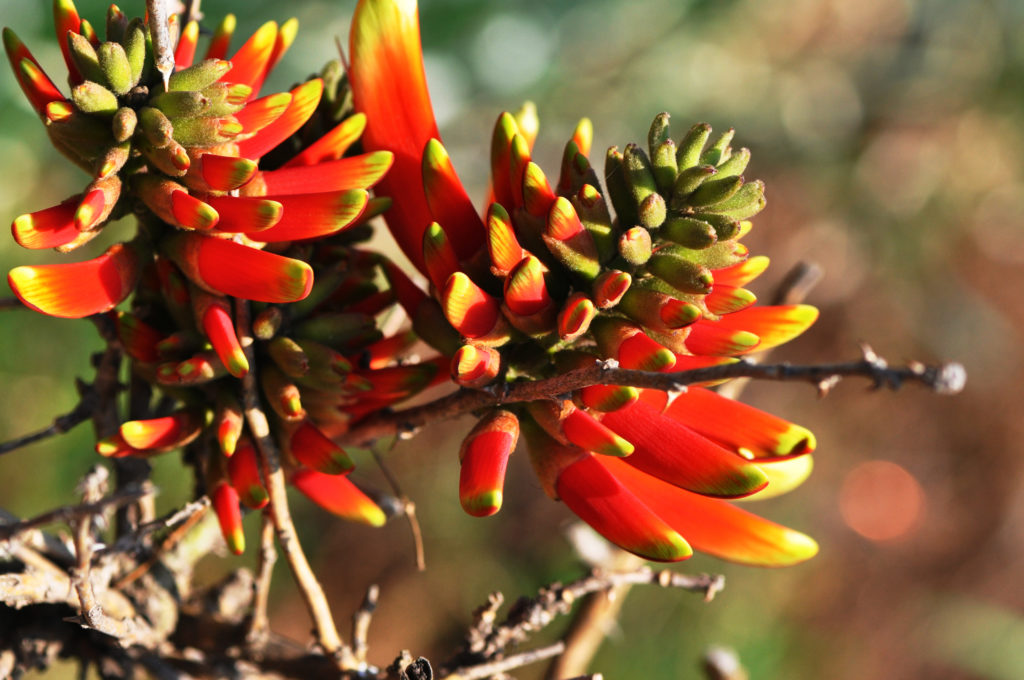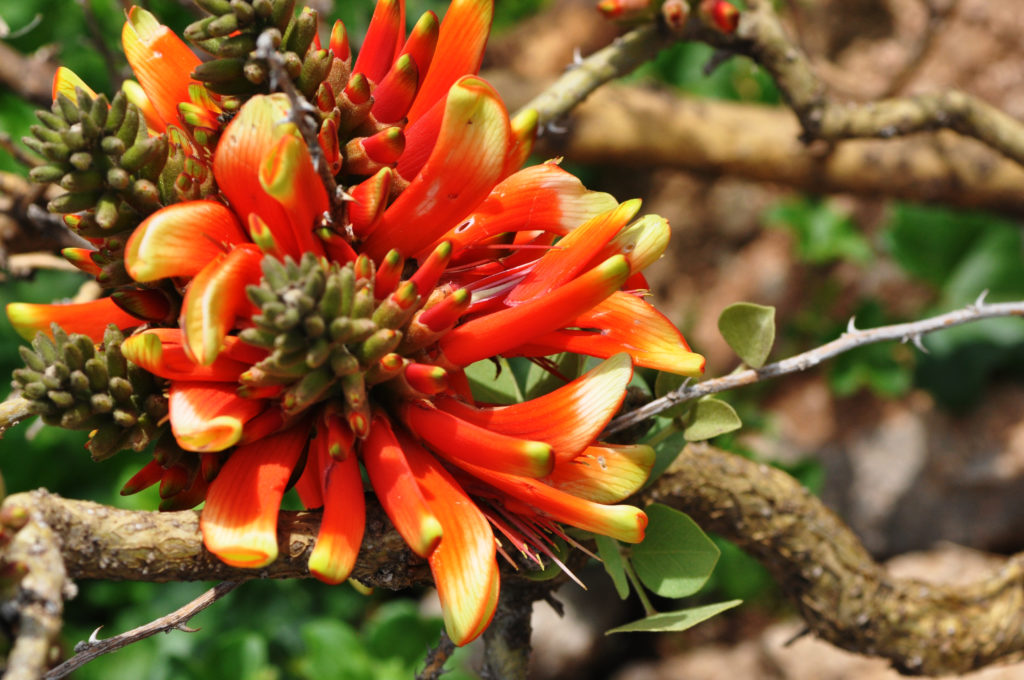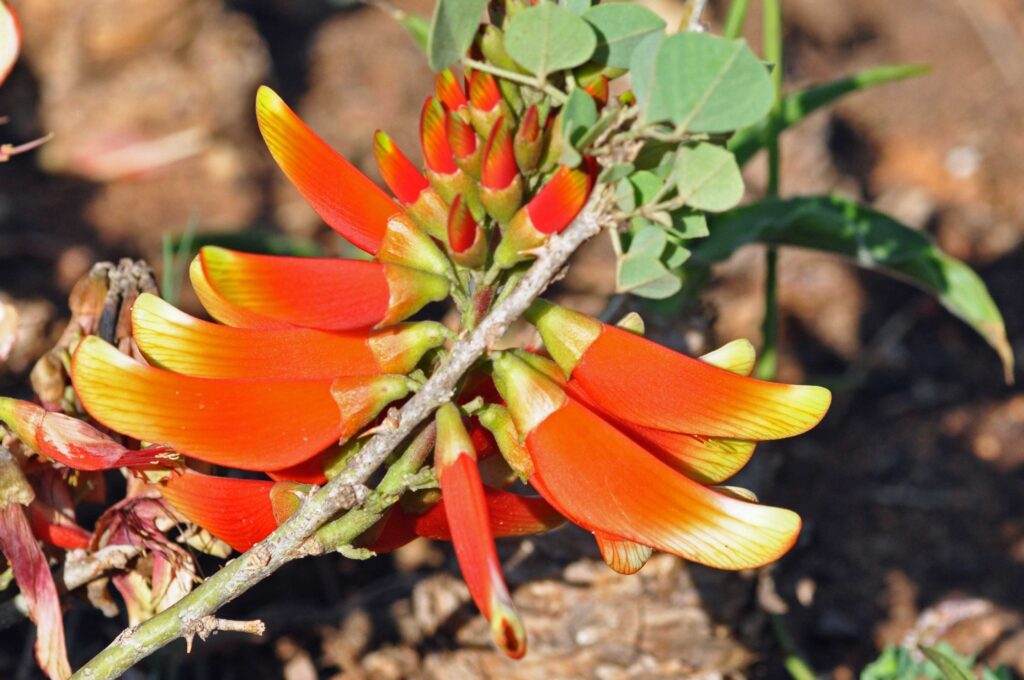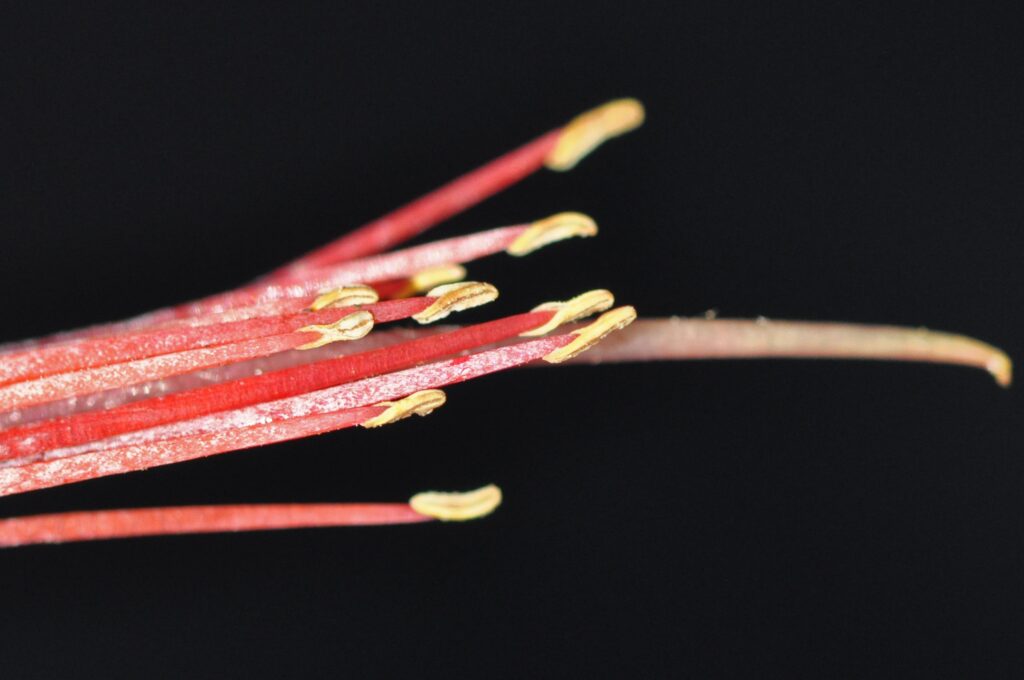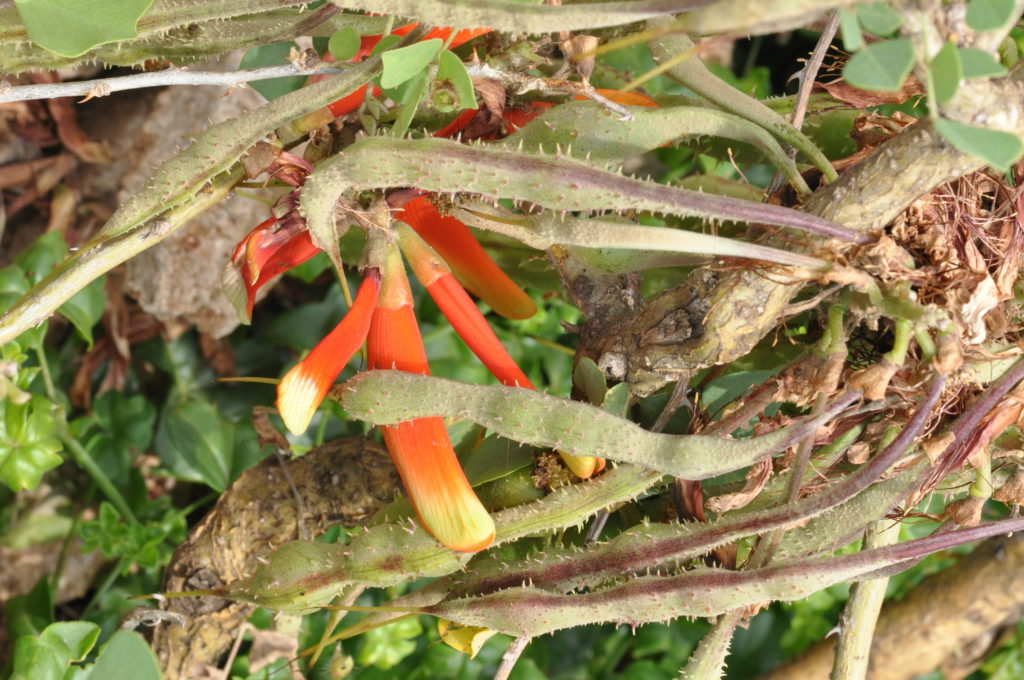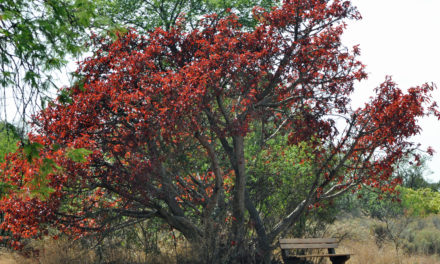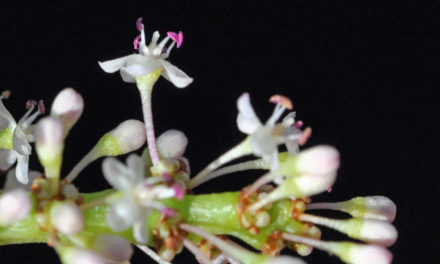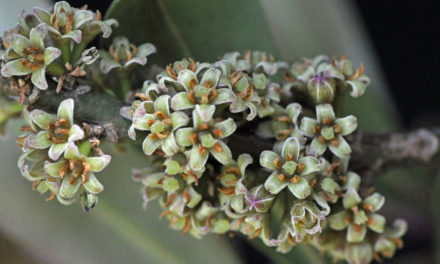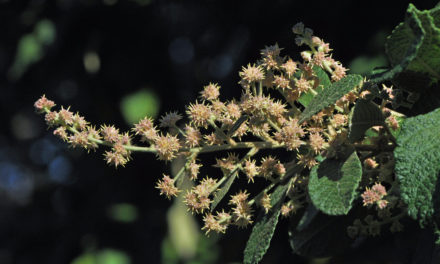General Info – summary
This deciduous Plant is a suffrutex, may reach 2m high and usually a shrub. Deciduous trifoliate Leaves have entire leaflets. Only the bases of the paired leaflets are asymmetric. The zygomorphic 5-merous Flowers are in racemes. The vexillum is tricoloured (red/yellow/green) and filaments are deep red. The superior ovary has an extended stigma. The Fruit is a brown, hairy, prickly pod with large brown seeds.
Description
Erythrina acanthocarpa
Common names: (Afr) Tambukidoring, Tambukiwortel, Wag-‘n-bietjie, Wag-‘n-bietjie-doring. (Eng) Tamboekie thorn, Tanbuki Thorn.
Family: Fabaceae, or Leguminosae (Pea, bean or legume family). After the Orchidaceae and the Asteraceae, the Fabaceae is the third largest Angiosperm (flowering plants) family with 700+ genera and close to 20 000 species. Local Tree genera on this website include Acacia (Vauchellia, Senegalia), Albizia, Bauhinia, Bolusanthus, Burkea, Calpurnia, Colophospermum, Cordyla, Cyclopia, Dichrostachys, Erythrina, Erythrophleum, Faidherbia, Indigofera, Mundulea, Peltophorum, Philenoptera, Piliostigma, Schotia and Xanthocercis. The Fabaceae are recognisable by their fruit and by their pinnately compound Leaves. Leaves may also be simple – even bilobed and usually have stipules – some of which may be spinescent. Leaflets are usually entire. Flowers are bisexual and bracteate. Regular flowers usually have 4-5 sepals and the same number of petals. Irregular flowers have 4-5 sepals and 5 or less petals. Stamens have anthers that have 2 pollen sacs and there are usually at least twice the number of stamens as petals – often 10. The superior Ovary has one locule that may contain 1 or more ovules. The Stigma and Style are simple. The single carpel develops into the Fruit, which is usually a pod. The fallen pods may break into segments. Seeds vary.
Name derivation: Erythrina from the Greek “erythros” meaning red: referring to the flower colour. acanthocarpa – pods armed with prickles. There are 9 species of Erythrina in southern Africa.
Conservation: National Status: L C. (Least Concern). Assessment Date: 2005. (W. Foden and L. Potter). The population is stable.
Tree.
The Plant is a Suffrutex (a low-growing woody shrub or perennial with a woody base). It is usually a much-branched thorny Shrub (photo 292) with perennial aerial stems up to 2m high. An enlarged succulent rootstock is present. It is variously hirsute (having rough or coarse hairs). Branches have sharp, curved thorns (photo 41). A relatively massive rootstock may develop.
- 292 2014.10.07 Walter Sisulu NBG. Photo: David Becking.
- 41 2014.09.23 Walter Sisulu NBG. Photo: David Becking.alter Sisulu Botanical Gardens
Leaves
This deciduous plant has relatively small, blue-green Leaves that are trifoliolate (compound leaves with 3-leaflets). The complete young leaf is hairy and light green on both sides (photo 997). Mature leaves are a darker green and measure up to 14 x 14cm and is relatively small for this genus (photo 999). The Leaflets bear numerous hooked, sharp, purplish-black prickles. The leaflet Apex is notched with a protruding apex or it is squarish. The Base of both the lateral paired leaflets is tapering and asymmetrical (not equal to the opposite side as in the bases of some leaves- photo 999) and the 2 lateral leaflets often bent towards each other (photo 42). The base of the central leaflet is symmetrical. The base of the Petiole is slightly swollen (photo 1004) and may be in excess of 4cm long. Stipules (basal appendages of the petiole) are present.
- 999 2018.03.07 Walter Sisulu NBG. Photo: David Becking.
- 897 2014.11.25 Walter Sisulu NBG. Photo: David Becking.
- 42 2014.09.23 Walter Sisulu NBG. Photo: David Becking.
- 1004 2018.03.07 Walter Sisulu NBG. Photo: David Becking.
Flowers
The Flowers usually appear before the leaves. They are bisexual and zygomorphic (irregular flowers with the corolla divisible into 2 equal halves in one plane only) and are arranged in Racemes (a simple, unbranched, indeterminate inflorescence with flowers that are Pedicellate (stalked flowers along the axis that open in succession towards the apex – photos 38 & 365). The Pedicel (individual flower stalk) is visible (photo 131). The initially green Calyx (photo 38) has Sepals that are joined to form a tube (photo 131), which is split below. It is hairy and the ends of its lobes become red (photo 131). The Corolla is Papilionaceous having a corolla with usually 5 petals that include a large upper Vexillum (Standard petal) that enclose the 2 lateral wing petals and the lower 2 united keel petals. The vexillum petal is tricoloured (bright red, grading into yellow) and ends in a distinctive, attractive yellow to green tip (photo 38). The 10 unequal Stamens (photo 137), become exserted (photo 365). Stamen Filaments are a deep red (photo 137) and basally united. The vexillary stamen is united to staminal tube. There is a single Pistil (a unit of the Gynoecium, the female element of the flower, composed of the Ovary, Style and Stigma). The stalked, superior Ovary has many ovules. Densely matted woolly hairs cover the ovary. The Style is incurved and extends the small terminal Stigma beyond the stamens (photo 137). (Jun-Oct).
- 38 2014.09.23 Walter Sisulu NBG. Photo: David Becking.
- 365 2015.09.15 Walter Sisulu NBG. Photo: David Becking.
- 131 2019.09.03 Walter Sisulu NBG. Photo: David Becking.
- 137 2019.09.03 Walter Sisulu NBG. Photo: David Becking. Dissected.
Fruit
The light, eventually brown and hairy Fruit is a Pod (a dry, dehiscent fruit) up to 12cm long. Pods are clearly constricted between the seeds and are armed with prickles (hence the specific name “acanthocarpa” – photo 595). The Seeds are brown and are larger than those of other southern Erythrina species.
- 595 2015.10.20 Walter Sisulu NBG. Photo: David Becking.
Distribution & Ecology
This frost hardy Plant is endemic (Endemism is the ecological state of a species being unique to a defined geographic location) in South Africa and common in the Queenstown district of the Eastern Cape. It often forms low thickets covering quite large areas. It is not present in Northern or Western Cape. Hybrids do occur.
Ethnobotany
This plant grows easily from seeds. Individual flowers are spectacular. The plants are relatively slow growing and young plants are frost sensitive. This plant is a survivor and has large invasive roots – keep plants away from buildings and paving.
References
Coates Palgrave, M. 2002. Keith Coates Palgrave Trees of Southern Africa, edn 3. Struik, Cape Town.
Foden, W. & Potter, L. 2005. Erythrina acanthocarpa E.Mey. National Assessment: Red List of South African Plants version 2020.1. Accessed on 2023/04/29.
Sharon Turner. Walter Sisulu National Botanical Garden. August 2001. Updated September 2016.
http://www.plantzafrica.com/plantefg/erythrinacantho.htm
http://posa.sanbi.org/flora/browse.php?src=SP
https://abcjournal.org/index.php/ABC/article/viewFile/855/808

